ט״ז מרחשון ה׳תש״פ | November 13, 2019
A Race Against Time
Mishpacha magazine sat with Rabbi Elkana Shmotkin and Yechiel Cagen of JEM and heard about their efforts to record firsthand encounters with the Rebbe.

By Yochonon Donn – Mishpacha magazine
Photos: JEM, Naftoli Goldgrab
The large computer monitor on the wall flickers for a moment, and then a familiar image and voice envelop the room.
It’s the Lubavitcher Rebbe, Rav Menachem Mendel Schneerson ztz”l, and his digitally restored voice is the sharpest it’s been since it first echoed across his L-shaped beis medrash known as “770” in 1967, when the recording was originally made. The Rebbe was defending his then-recent decision to ask his chassidim to go around and lay tefillin on Jewish passersby.
While today people around the world acknowledge and appreciate “Operation Tefillin,” at the time it aroused opposition in many circles from other gedolim. But the Rebbe noted that there was a precedent for the campaign: Rav Moshe ben Yaakov of Coucy, a 13th-century Rishon known as the Semag after his Sefer Mitzvos Gadol, would go around the streets of his French city and ask people to put on tefillin.
Ironically, it was the Rebbe’s fervent embrace of technology to spread Torah and Yiddishkeit around the world that is allowing his legacy to remain as fresh as it was when he was alive, frame by frame, one profound farbrengen after the other. The tefillin video, along with thousands of shorter clips divided into two minute segments, are sent out to tens of thousands of people on a daily basis. It allows Lubavitcher chassidim to stay connected on a personal level with their rebbe so long after his passing — an unmatched accomplishment.
While the tefillin campaign might have been one of the more popular aspects of the Rebbe’s work, it is by no means how his chassidim and admirers defined him. The Rebbe was always looking forward, and as they contemplate 25 years without him — a quarter-century after the tears and the crushing loss — the thousands of hours of video and audio, plus an archive boasting nearly a half million images, continue to point to new vistas for the army he left over, inspiring the Rebbe’s estimated 5,000 shluchim with the tools and fortitude to continue their work in far-off places.
Just a Click Away
The drab, gray, concrete two-story building at the edge of Crown Heights could be mistaken for just another warehouse dotting the neighborhood. Its storefront-like grates — with both fresh and bleached graffiti attesting to a losing battle with the gritty neighborhood’s street artists — open at regular intervals as trucks draw up, get loaded with merchandise, and then drive off.
The thousands of students pouring out of the huge public school across the street likely have no idea that they are just meters away from the headquarters of one of the largest photo and video archives in the Jewish world. A quarter century after the passing of the revered Lubavitcher Rebbe, Jewish Educational Media’s thousands of square feet are devoted to his memory.
It’s been 25 years since the Jewish world, and Chabad in particular, was shaken by the Rebbe’s passing on 3 Tammuz, 1994. In that span, a generation of devotees has grown up without knowing the Rebbe on a personal level. Many of the shluchim, the couples who journey to the far-flung corners of the world to bring the Torah’s call to humankind, have never seen the Rebbe personally — a generation of soldiers who’ve never even seen the general.
Thanks, however, to a staff of a few dozen young men, the memory of the Rebbe, considered one of the Jewish world’s most influential personalities of the 20th century, is but a click away.
“When the Rebbe passed away in 1994,” says Rabbi Elkanah Shmotkin, JEM’s executive director, “it became the first time in Jewish history that the recordings, the teachings, the inspiration of a Jewish leader can still be studied directly from him. Imagine if you had a recording of the Rambam or the Baal Shem Tov and you could learn directly from them. The Rebbe’s impact is able to continue through technology.”
The technology under JEM’s umbrella varies from basic DVDs to the most advanced apps, with videos, books, and small paperbacks in the middle.
In one room, a young man sits at a computer, feeding into the server as many as 400,000 photos of the Rebbe. The sheer number of pictures is mindboggling. Many of the photos are “tagged,” meaning that a searcher can type in his name and see, for example, if anyone recognized him in the Purim of 1968 farbrengen.
In a room in the center of the cavernous space, a man sits at a desk, sending out short clips of the Rebbe to 25,000 followers around the world, captioned in five languages. WhatsApp’s recent move to make it harder to share content is giving the young man some job security. He created groups of 250 people and sends to five groups at a time. He continues pressing “send” until his entire list of 25,000 gets the clip.
The clip on the day we’re visiting JEM features the Rebbe’s meeting with the previous Aleksander Rebbe, Rav Avrohom Menachem Dancyger, who was niftar 14 years ago. A “good night” greeting by the Rebbe to his visitor prompted a discussion by the two gedolim on the topic of Mashiach, with the Rebbe observing that the Rambam — “who,” noted the Rebbe, “wrote a halachah sefer, and a halachah sefer cannot be dismissed as a remez or a drush” — says that the Jewish people “will immediately be redeemed.”
In a dark room near the exit, a person is standing and playing around with a smartphone. He is experimenting with a new feature — an app that allows users to filter the audio recordings of the Rebbe’s farbrengens by year and date. He shows me a prototype of the program. It has listed in chronological order all speeches, and has another part that allows a click on any part of the Megillah, for example, to find out what the Rebbe had to say about that particular pasuk.
A larger room off to the side accommodates a small group of scholars who’ve been thoroughly researching the life of the Rebbe, the most documented person in Jewish history by the time of his petirah in 1994.
One of their flagship projects is a fascinating, 500-plus page book called Early Years, which was published three years ago and uncovered a wealth of heretofore unknown history of the Rebbe’s youth, based entirely on accessed documents.
“It was a huge, huge research project,” Shmotkin says. “We procured documents from 12 countries. It took many years and over a million dollars. There was just so much material that we found — from government papers to diaries to letters, passports, and even school archives.”
The book starts the reader off in the Rebbe’s childhood home of his father, Rav Levi Yitzchok Schneerson, a descendant of the Tzemach Tzedek of Lubavitch and the rav of Dnepropetrovsk, a large industrial city in central Ukraine. One surprise researchers had was the discovery of the identity of one of the Rebbe’s childhood rebbeim — a litvish rosh yeshivah who lived in his house for a year. The Rebbe had once mentioned this early mentor, but nothing was known about him until the book attached a face and kever to him.
Before It’s Too Late
Today, though, JEM has another immediate mission. “We want to bring the Rebbe’s image, voice, persona, and stories to the public, with specific emphasis on things that people can incorporate into their own lives,” says Rabbi Yechiel Cagen, director of JEM’s ambitious “My Encounter with the Rebbe” oral history project.
Under the auspices of JEM, Cagen and his “My Encounter” team have in the last 15 years collected over 1,500 interviews in five languages — from roshei yeshivah to prime ministers to Israeli generals — who’ve willingly shared their personal encounters in front of the camera. The squads of researchers dedicated to his memory say they regularly have a “wow” moment when uncovering new aspects and details hitherto unknown to the chassidim.
For Cagen, though, it’s a race against time. “Many of the people who had the longer, in-depth conversations with the Rebbe in the 1940s, ’50s, and even ’60s are no longer alive.”
Although most of his work is focused on the past, Cagen says it’s really all about the present. “People hear things that the Rebbe told someone 60 years ago, and in those words, many find guidance to life’s challenges today. What we’re doing is bridging the past and the future .”
The evolution of how the Rebbe’s farbrengens went from implementing a strict no photo rule to becoming one of the most recorded events in the Jewish world plays itself out in the sprawling JEM office.
Ironically, the earliest video in JEM’s possession was ordered to be recorded by the Rebbe himself, and the subject was his father-in-law, Rav Yosef Yitzchok Schneerson, known as the Rebbe Rayatz or the Frierdiker Rebbe. The Rayatz arrived in the United States in 1940 and, due to his stature, was accorded a special visit by some district judges, who are seen pulling up to his house in Crown Heights to process his citizenship application.
In the video, the Rebbe is seen standing behind the Rayatz, wordless, a small smile gracing his lips as he hands him pens when needed and points out places on the paper that have to be filled in or signed.
But when the Rayatz passed away in 1950, and his son-in-law took over a year later, he actively discouraged pictures, video, or audio recordings of himself. Some pictures in the early years have the Rebbe with his hand over his face.
Chassidim who wanted to hold onto the Rebbe’s voice for future review began hiding a mic under the table. Eventually, the Rebbe agreed to allow himself to be photographed and his voice to be recorded. That led to the several major weekday farbrengens every year being live-broadcast on radio station WEVD.
JEM’s own work began in 1980, with an inspiration from Reb Dovid Krinsky, the son of the Rebbe’s secretary Rabbi Yehuda Krinsky. What if Chabad communities around the world could experience the Rebbe’s major weekday farbrengens in real time, he wondered. He hesitatingly requested the Rebbe’s permission, and the Rebbe allowed him to introduce the TV cameras into the farbrengen.
From there, things grew rapidly. Before long, the Rebbe’s teachings were opened up to television audiences on cable channels around the world, translated live into a number of languages. Full-page ads were placed in the New York Times and other major publications alerting people to upcoming televised .
“At the time,” said Shmotkin, “the only others who used live transmissions were government officials and major news organizations. To book a satellite for four or five hours straight was unheard of. But, likely because the Rebbe always encouraged the embrace of technology for good things, it became a regular thing.”
The 1980 TV show, which is available through JEM, indicates that it was a farbrengen to mark 30 years since the passing of the Rebbe Rayatz on 10 Shevat in 1950. One immigrant from Siberia interviewed by the hosts said he would stay the entire night if needed, and a traveler from London said he came just for the night and would be leaving as soon as the event ended. Also interviewed were an Iranian emigre and a local child from Crown Heights. The child did not understand what the Rebbe said, he told the interviewer, because “my father didn’t explain to me enough.”
“They listened,” intoned the newscaster, “and they listened and they listened.”
A farbrengen with the Rebbe was something unpredictable and exhilarating. Mindful of his global audience, the Rebbe would talk about universal themes and address current events. As a child growing up in Milwaukee, Shmotkin recalls the excitement of the local Lubavitchers when going to a broadcasted farbrengen. A hotel would be booked and members of the local community would pack a conference room to watch the Rebbe live. People in Eretz Yisrael would be up at 2 a.m. and Australians would watch the next morning.
“At first,” he says, “JEM consisted of a bunch of boxes of videos in somebody’s basement. But we began to see that there is a tremendous thirst to continue learning from and being inspired by the Rebbe.”
Who the Rebbe Is
In the last few years, JEM has grown into much more than Chabad’s multimedia arm. The story of a tzaddik cannot be told merely by stories and divrei Torah. A vital component is his influence on the world and on the soul. A pasuk in Chumash may not be easily understood without consulting Rashi, and a tzaddik cannot be fathomed without looking at his chassidim.
That’s why the “My Encounter” project is one of JEM’s most important, and urgent, missions. Teams of trained interviewers, both in New York and in Israel, question, prod and, if necessary, nudge recalcitrant possessors of their encounters with the Rebbe as they seek to record whatever knowledge exists before the biological clock runs dry.
But sometimes the most memorable people are the ones they missed. Like Lord Immanuel Jakobovits’s wife, Amelie. Lord Rabbi Jakobovits was the chief rabbi of the British Empire until his passing in 1999. He had a close relationship with the Rebbe, but of accentuated interest to Cagen was his wife, who was a daughter of Rav Elie Munk ztz”l, the chief rabbi of Paris. The Rebbe had been in Paris before World War II and the two developed a close relationship. The Rebbe used to come to the Munk home on some Friday nights to peruse the extensive seforim library there. JEM’s massive archives tell a small part of the story.
What, JEM wondered, did Rav Munk’s daughter remember about those years?
But a schedule for the interview failed to materialize. Planned meetings never worked out, each time for a different reason. “We tried for years,” Cagen recalled. “It was very hard to reach her. She was very active until her last day. Then, when she passed away, I felt awful. It just shows how important it is to get there before the clock runs out.”
Wait, I inform Cagen, there is a sister, Francoise Birnhack, still alive and living in Boro Park.
“Really!?” he jumps. “That would be amazing. That would be a good ending to the story.”
I provided him with contact information — the sister is the mother of a friend — and I watch JEM get into action. Within minutes — 32 minutes, to be exact — he tells me that he spoke to not one, but two of Lady Jakobovits’s sisters.
“She remembers that her father would speak to the Rebbe on the phone, which was extremely rare in that time,” he tells me later. “That left an impression on her. Rabbi Munk’s two sons-inlaw went with Rabbi Munk to a private audience with the Rebbe on two separate occasions. They remember the Rebbe speaking to them about the situation of the mosdos in France and of the lack of shochtim in Europe at the time. Rabbi Birnhack was amazed at the Rebbe’s intimate knowledge of all the happenings in Paris.”
The most memorable interview Cagen did goes back several years, when he went to Israel for a week and conducted a series of conversations with senior political and military officials.
During that visit he interviewed General Yehoshua Sagi, the director of AMAN, Israel’s military intelligence service, who was a close ally of Prime Minister Ariel Sharon. He told Cagen that he traveled to New York during the 1982 Lebanon War to consult with the Rebbe.
“You’re a senior intelligence officer,” Cagen queried incredulously, “and you went 3,000 miles to consult with a chassidic rebbe?”
“He looks at me,” Cagen said, “and he says, ‘You and I are on different wavelengths. Do you have any idea who HaRabi m’Lubavitch is?’ And he starts telling me how people knew that if you had a problem, the address to go to was the Lubavitcher Rebbe. He was telling me, a Lubavitcher chassid, who the Rebbe is.”
He Demanded Action
JEM has expanded to include various other publication forms. Living Torah, a 15-minute video sent out weekly in six languages, includes the Rebbe speaking, singing, interesting moments with a visiting gadol, and personal interactions with private individuals.
“What I’ve always found fascinating,” Cagen says, “is how people walked into the Rebbe’s room one way and came out empowered to tackle whatever issue they were grappling with. The Rebbe empowered people. So when I interview people I am looking to see how the Rebbe dealt with people from different walks of life and related to them on their level.”
On one of the walls in JEM’s headquarters hang a bunch of small papers. I go over to have a better look.
“Days to Launch: 24,” reads one large sign near the papers. In honor of the Rebbe’s 25th yahrtzeit, JEM has undertaken 25 goals to reach. Some of them were reached already, such as Chaim’s “WhatsApp series,” Mendel’s “Adults’ Curriculum” and Yisrael’s “Restored Audio Farbrengen.” Others, such as a children’s curriculum, the Rebbe’s views on anti-Semitism, and the top 25 videos of the Rebbe, are marked “In Progress.”
One major undertaking in the “Completed” list is a new book called One by One, spearheaded by Rabbi Yecheskel Posner, who manages the publishing. Culled from the group’s ongoing interviews with people whose lives were inspired by the Rebbe, it’s the highlight of the 25th yahrtzeit project. A quick glance through the book shows interviews with political leaders such as former Israeli prime minister Ariel Sharon, and organizational heads including those of the Orthodox Union, Young Israel, and even Hillel International.
Some of the stories are what you might call “vintage Lubavitch,” such as one from Rabbi Zalman Lipsker, who today is the Chabad shaliach in Philadelphia. He recalled how in 1961, as a bochur sleeping over a table in the beis medrash, he was once awakened at 2 a.m. by Rabbi Hodakov, the Rebbe’s secretary, and asked to go to a house in Long Beach and help someone put on tefillin. Clearly, the mission was coming all the way from the top — the Rebbe himself. “Make sure not to come before six a.m. because you might wake him up,” Rabbi Hodakov warned, “but don’t come after six because you might miss him.”
Rabbi Lipsker went to the home, and helped a man named Louis Shelder put on tefillin. He later learned that Shelder had been to the Rebbe earlier the previous evening and the Rebbe inquired if he put on tefillin every day. He replied that no, he didn’t, and couldn’t even if he wanted to. The Rebbe then asked if he would lay tefillin if he sent someone to him.
“And here you are, only a few hours later,” Shelder told the young chassid standing before him.
Shlomo Shamir, a writer for Haaretz, recalled how the Rebbe traced the beginning of the Islamist resurgence to the Iranians taking 52 American diplomats hostage after the 1979 Iranian revolution. The Rabbinical Alliance of America had declared a fast day for 23 Kislev of that year. But Shamir, unaware that the Rebbe was behind it, ridiculed it in a column headlined “Why Fast Now?” The Rebbe, in his farbrengen that Motzaei Shabbos, severely rebuked him. Shamir subsequently wrote an apology letter.
The writer spoke of how the Rebbe always urged him to use his talents — and the platform he was given as a journalist — to help people better themselves and the world around them.
“The Rebbe always saw in people their potential, how they could help, how they could better the world,” Shamir said in the book. “And he always demanded that they use their talents and their knowledge to the fullest…. This was one of his cardinal principles: He demanded action.”
The Rebbe, it’s well-known, never took a vacation, and demanded the same level of dedication from those around him. Because for the Rebbe, it wasn’t about work, it was about opportunities.
The Lubavitcher Rebbe, his chassidim like to say, was like a sweet onion. Even to those who have devoted their lives to understanding him, to grasping his methods, his personality, the more layers that are peeled reveal yet another undiscovered layer.
“The Rebbe never ceases to surprise us — the stories, the sagas with which the Rebbe was involved,” says Shmotkin. “You know, we’re studying the Rebbe for how many years now? Twenty-five years? There’s always a curveball. There’s always something that makes us go, oh my gosh, we thought we knew it all. And then the Rebbe gave this advice or said this to someone. It’s unending.”

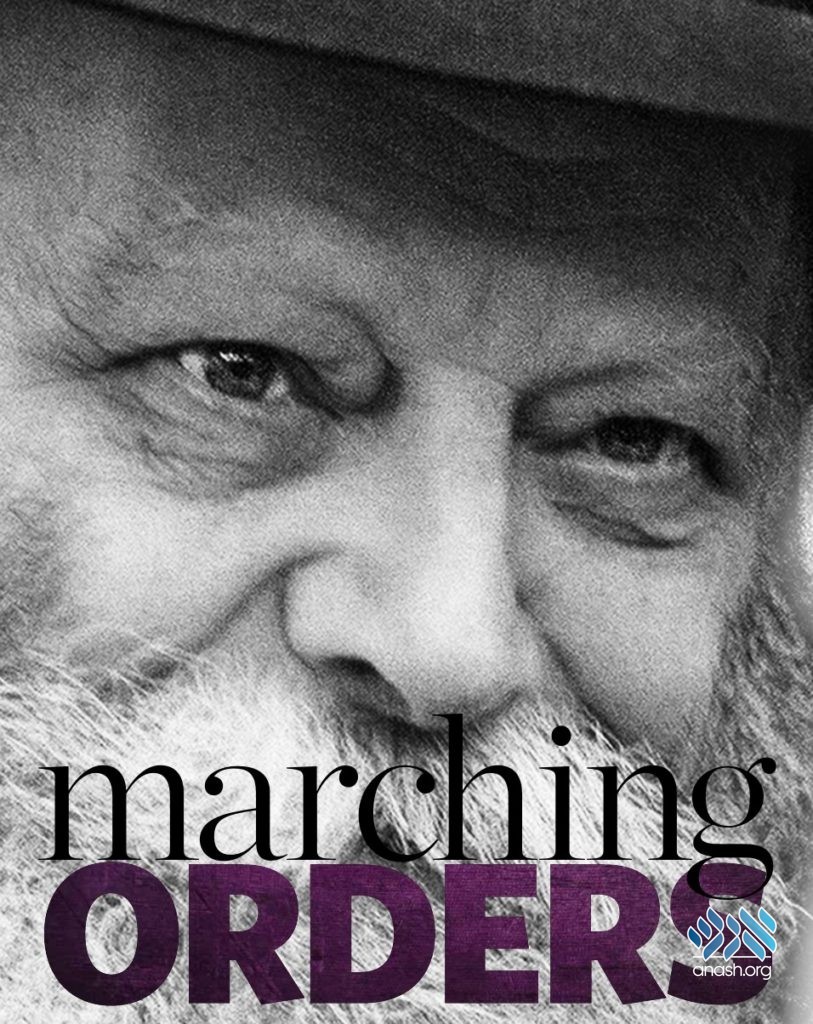
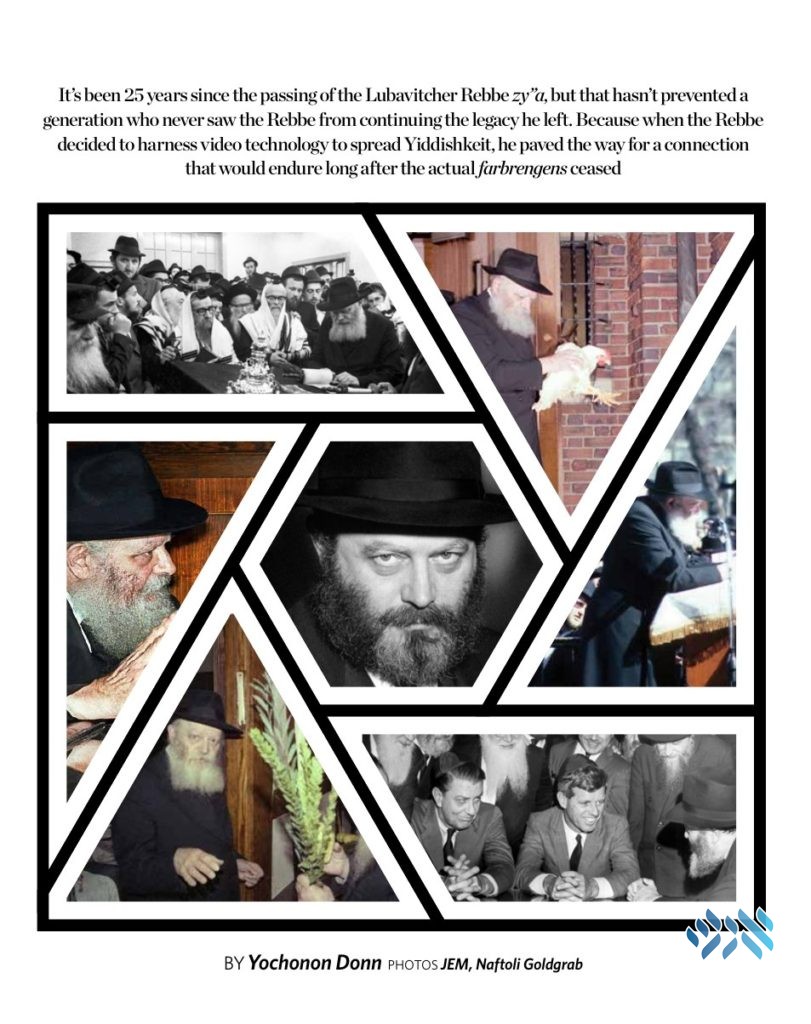
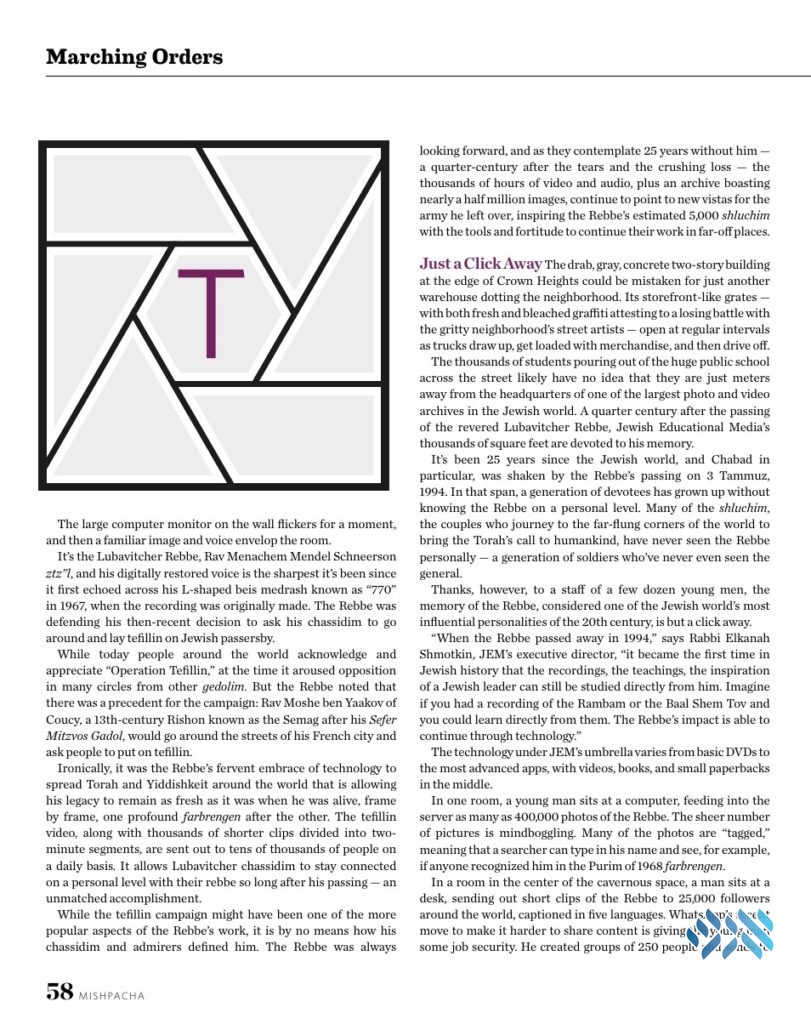
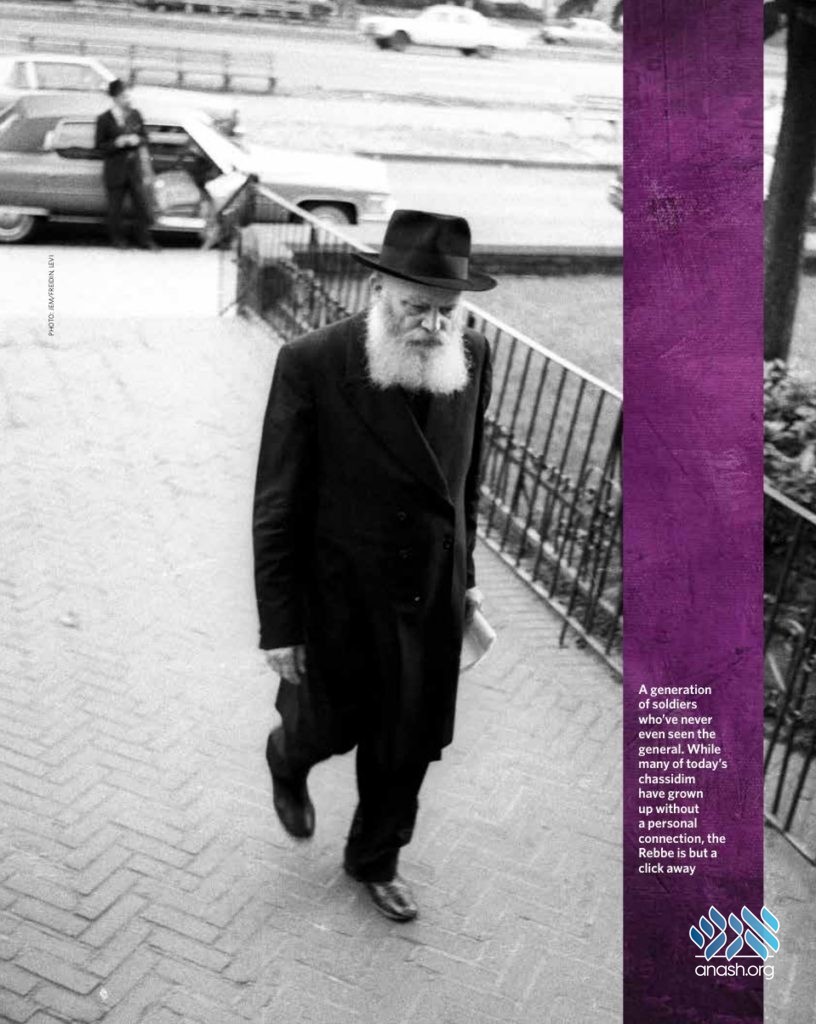

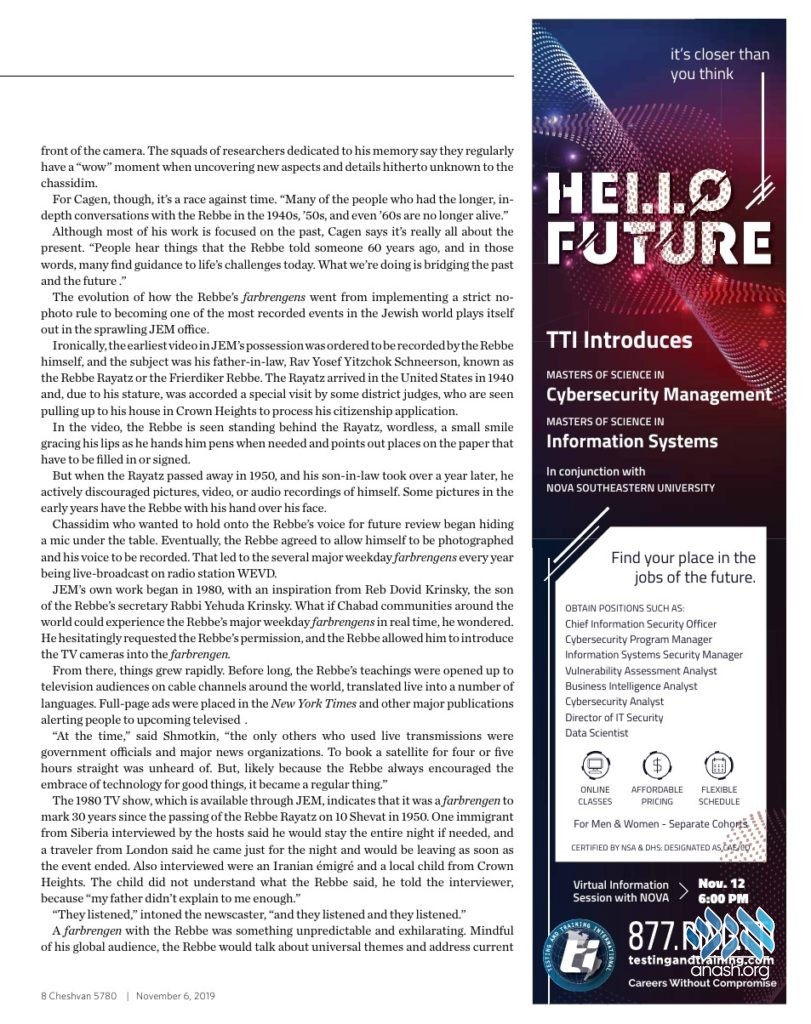
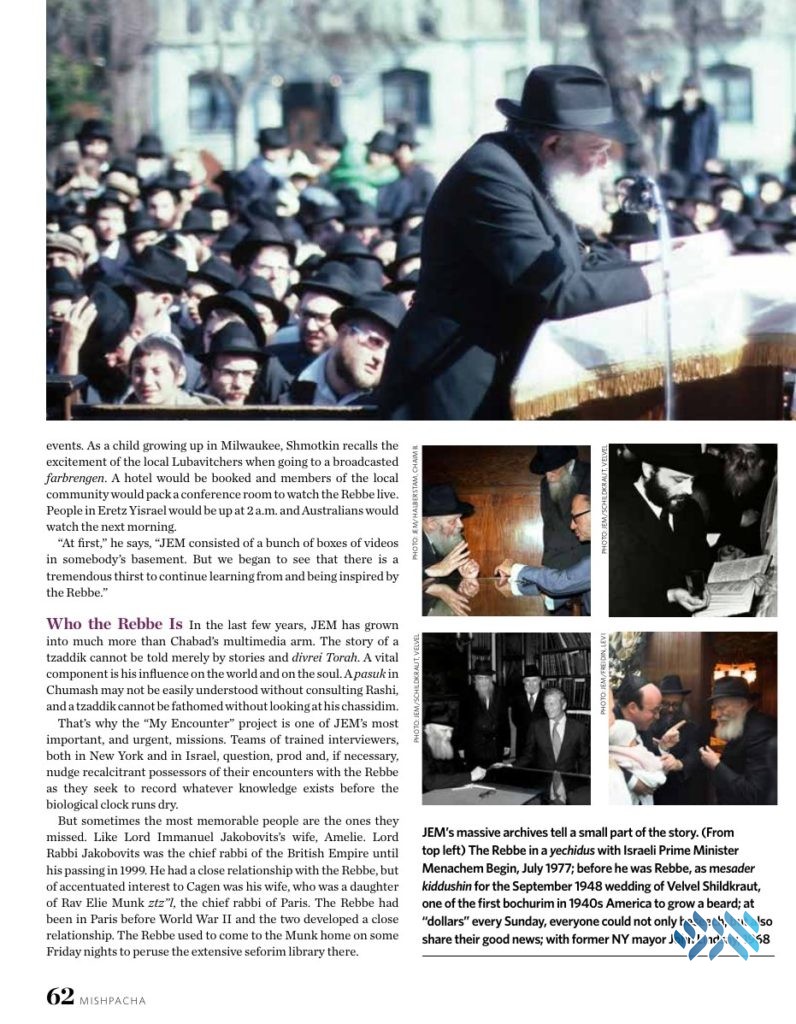
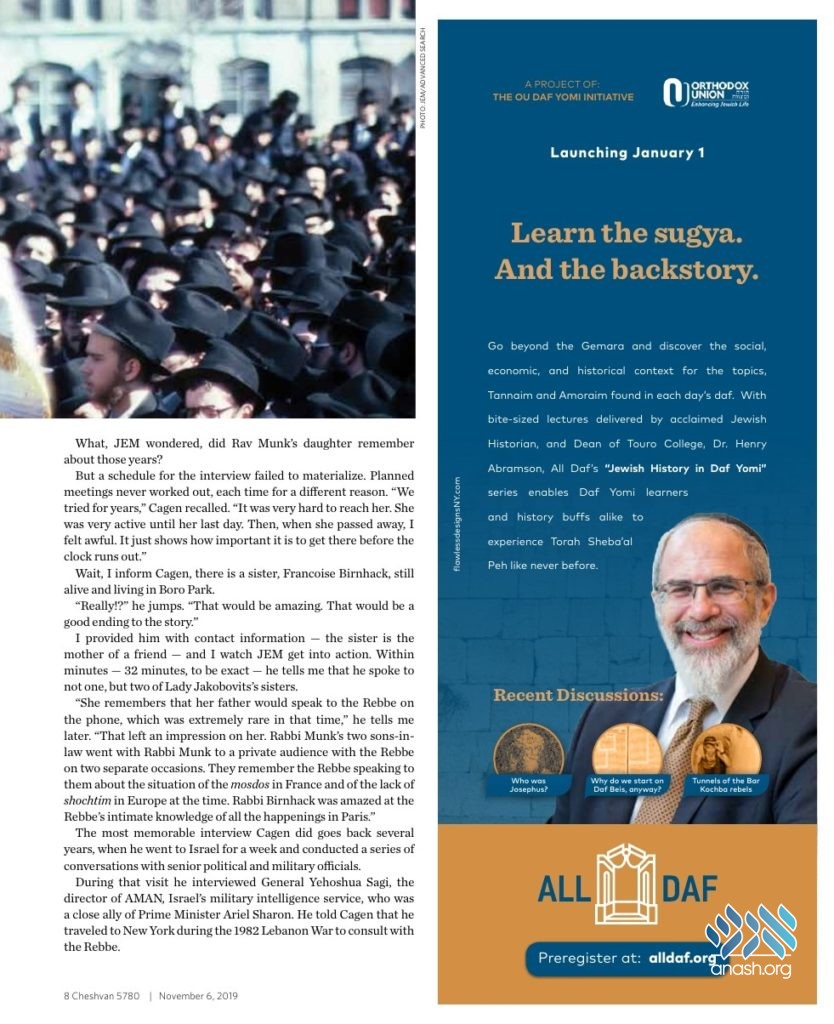
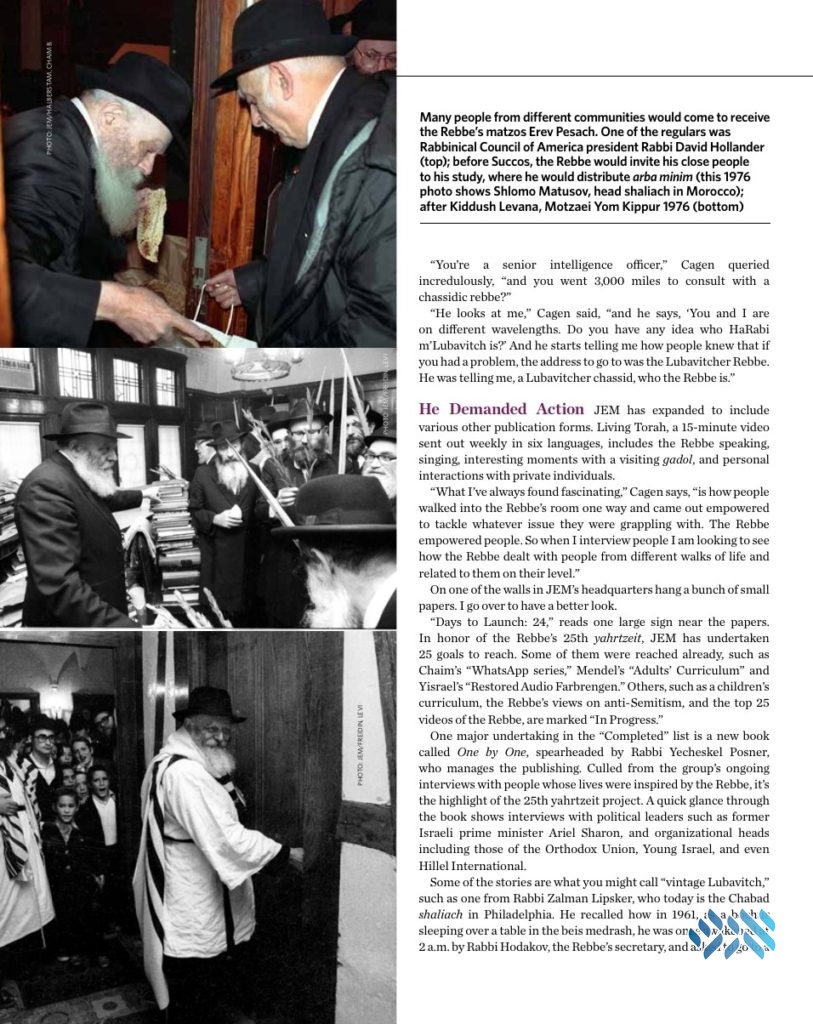


Send us your feedback